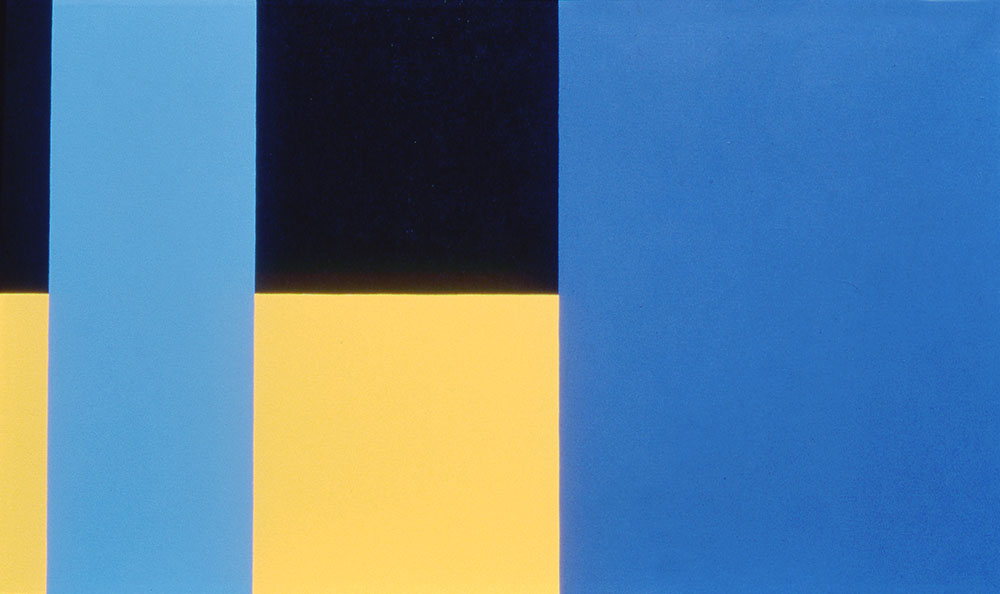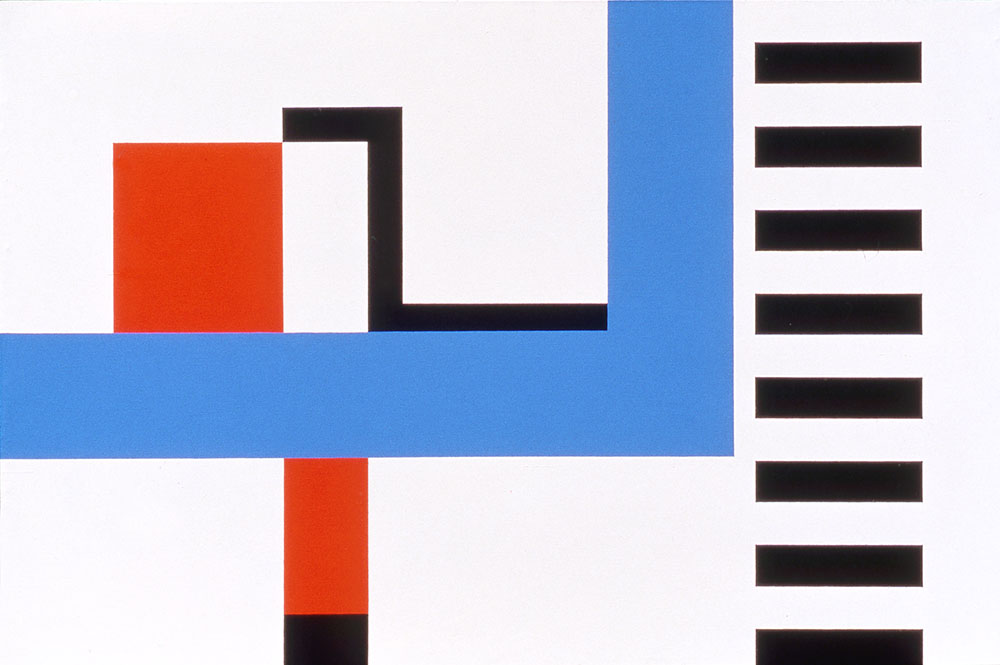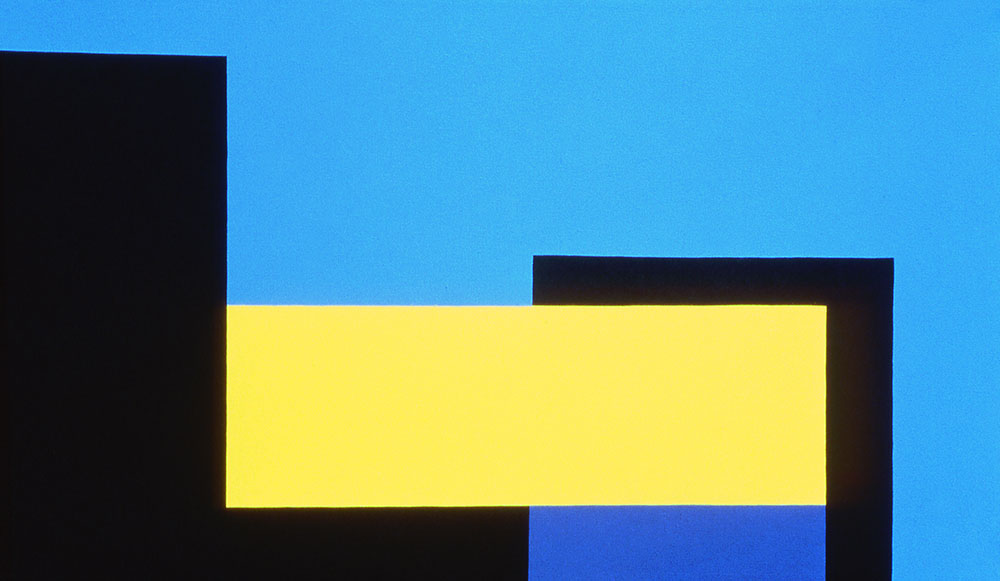The Artist

Born in 1913, Mary Henry attended the California College of Arts and Crafts at a time few women were sincerely accepted by the public and the art world as artists. Then, in the late '30s, Henry experienced a life-altering moment whose full effect wouldn't command her life for another 25 years or so: a lecture by the constructivist pioneer and Bauhaus champion Laszlo Moholy-Nagy. Henry was gripped by Bauhaus' formal ideas and Moholy-Nagy's fascination with pure expressiveness through line and color. Those ideas brewed and steeped in Henry's imagination as she lived a life of domesticity: married with children. Henry even left her family for a time to study with Moholy-Nagy in Chicago in the '40s, but it wasn't until 1964, the year she got divorced and became a working artist, that Henry would truly pursue her ambitions. Thus initiated, her journey began to perfect a spare yet expressive visual language out of geometric shapes and bold graphic colors. Henry emerges as a second-generation geometric abstractionist and one of its most supple champions; she located spiritual essences in her work and elicited the highest passion. Through the years, Henry has garnered praise -- and a review in Artforum magazine -- and while she had exhibits in San Francisco and was collected in major Northwest museums, Henry has remained a kind of cult regional figure that the art world is just learning about.
Work
“I’ve never paid attention to art trends, though Op Art influenced my early paintings. I found my way of working long ago and I stay with it, working to push my boundaries further and further out. Often I return to ideas to I’ve had as long as twenty years, and because my thinking about art has been consistent, there is a continuity throughout my long years to painting. I am not interested in portraying life as such, but I am interested in portraying ideas and emotions. What I would like most of all to be able to do would be to find in my painting the connection of humanity to the universe - a truly symbolic relationship made visible. This is, I believe, my concept of the spirituality of my painting. I continue with non-objective work using geometric shapes. I believe it is the way that best expresses what I feel and what I think is the deepest, most significant art form now and for the future. I believe that it is not necessarily a good thing to be constantly trying to be new; beauty is what we should be looking for.”
Links
https://www.seattletimes.com/obituaries/mary-henry-96-northwest-painter/
https://www.artsjournal.com/anotherbb/2009/05/seattle_painter_mary_henry_191.html
https://www.portlandart.net/archives/2007/10/an_afternoon_wi.html
https://www.oregonlive.com/art/index.ssf/2009/05/obituary_mary_henry_19132009.html
https://artisttrust.org/index.php/award-winners/artist-profile/mary_henry
Howard House's second Henry show offers a window into an artist's emergence by Gayle Clemans for The Seattle Times
Currently Hanging: A Life - Jen Graves The Stranger SLOG
Mary Henry - artists hidden in plain sight, Regina Hackett's Blog, Another Bouncing Ball, Dec. 20, 2009
Click here to read Jen Graves' article about Mary Henry in the Stranger
Click here to read Sheila Farr's reivew in The Seattle Times
Click here to read Regina Hackett's review of Henry's show at in the Seattle PI





Jeffrey Thomas Fine Art is pleased to present this solo exhibition Garden of Delights: Select Paintings by Mary Henry. Mary Henry is regarded by many curators and critics to be one of the most important artists from the Northwest working in the past century. Jeffrey Thomas Fine Art believes it is essential to keep significant NW artists in front of the public through focused shows such as this one devoted to Mary Henry, a “Matriarch of Modernism”.
Born in 1913, Mary Henry attended the California College of Arts and Crafts at a time few women were sincerely accepted by the public and the art world as artists. Then, in the late '30s, Henry experienced a life-‐altering moment whose full effect wouldn't command her life for another 25 years or so: a lecture by the Hungarian Constructivist pioneer and Bauhaus champion Laszlo Moholy-‐Nagy. So impressed with her work and discipline, Moholy-‐Nagy offered Henry a job teaching with him at the “new” Bauhaus school he had started in Chicago, the Institute of Design. This was during a time when he had never hired any women teachers. She turned him down, graduating with an MFA in 1946.